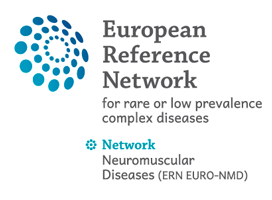30 Mar 2015
Evidence-based guideline summary: Evaluation, diagnosis, and management of congenital muscular dystrophy
Authors:
Peter B. Kang, Leslie Morrison, Susan T. Iannaccone, Robert J. Graham, Carsten G. Bönnemann, Anne Rutkowski, Joseph Hornyak, Ching H. Wang, Kathryn North, Maryam Oskoui, Thomas S.D. Getchius, Julie A. Cox, Erin E. Hagen, Gary Gronseth, Robert C. Griggs
Objective: To delineate optimal diagnostic and therapeutic approaches to congenital muscular dystrophy (CMD) through a systematic review and analysis of the currently available literature.
Methods: Relevant, peer-reviewed research articles were identified using a literature search of the MEDLINE, EMBASE, and Scopus databases. Diagnostic and therapeutic data from these articles were extracted and analyzed in accordance with the American Academy of Neurology classification of evidence schemes for diagnostic, prognostic, and therapeutic studies. Recommendations were linked to the strength of the evidence, other related literature, and general principles of care.
Results: The geographic and ethnic backgrounds, clinical features, brain imaging studies, muscle imaging studies, and muscle biopsies of children with suspected CMD help predict subtype-specific diagnoses. Genetic testing can confirm some subtype-specific diagnoses, but not all causative genes for CMD have been described. Seizures and respiratory complications occur in specific subtypes. There is insufficient evidence to determine the efficacy of various treatment interventions to optimize respiratory, orthopedic, and nutritional outcomes, and more data are needed regarding complications.
Recommendations: Multidisciplinary care by experienced teams is important for diagnosing and promoting the health of children with CMD. Accurate assessment of clinical presentations and genetic data will help in identifying the correct subtype-specific diagnosis in many cases. Multiorgan system complications occur frequently; surveillance and prompt interventions are likely to be beneficial for affected children. More research is needed to fill gaps in knowledge regarding this category of muscular dystrophies.

